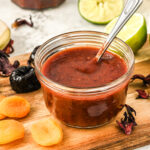Have you ever wondered what does fennel taste like? Aromatic yet delicate, fresh and savory, with a hint of licorice – these are just some of the unique flavor profiles that make up this aromatic herb. From bringing unexpected depth to your favorite salad to creating interesting combinations in soups and sauces, understanding how to use fennel creatively will add another dimension to your culinary repertoire. So if you’re curious about what fennel tastes like and how it can be incorporated into meals both sweet and savory, then keep on reading for all the details.
Contents
What Is Fennel?
Before we dive into what does fennel taste like, let’s learn about what is fennel. Fennel (also known as sweet anise or Florence fennel) is a flowering plant belonging to the carrot family, and its edible bulbous stalk has both culinary and medicinal uses. This herb has a long history of use in Mediterranean cuisine, where it is traditionally served cooked or raw in salads. Fennel’s distinctive flavor comes from its high concentration of anethole, the same compound found in star anise and licorice. This is why fennel has a sweet and slightly pungent taste with subtle notes of licorice.
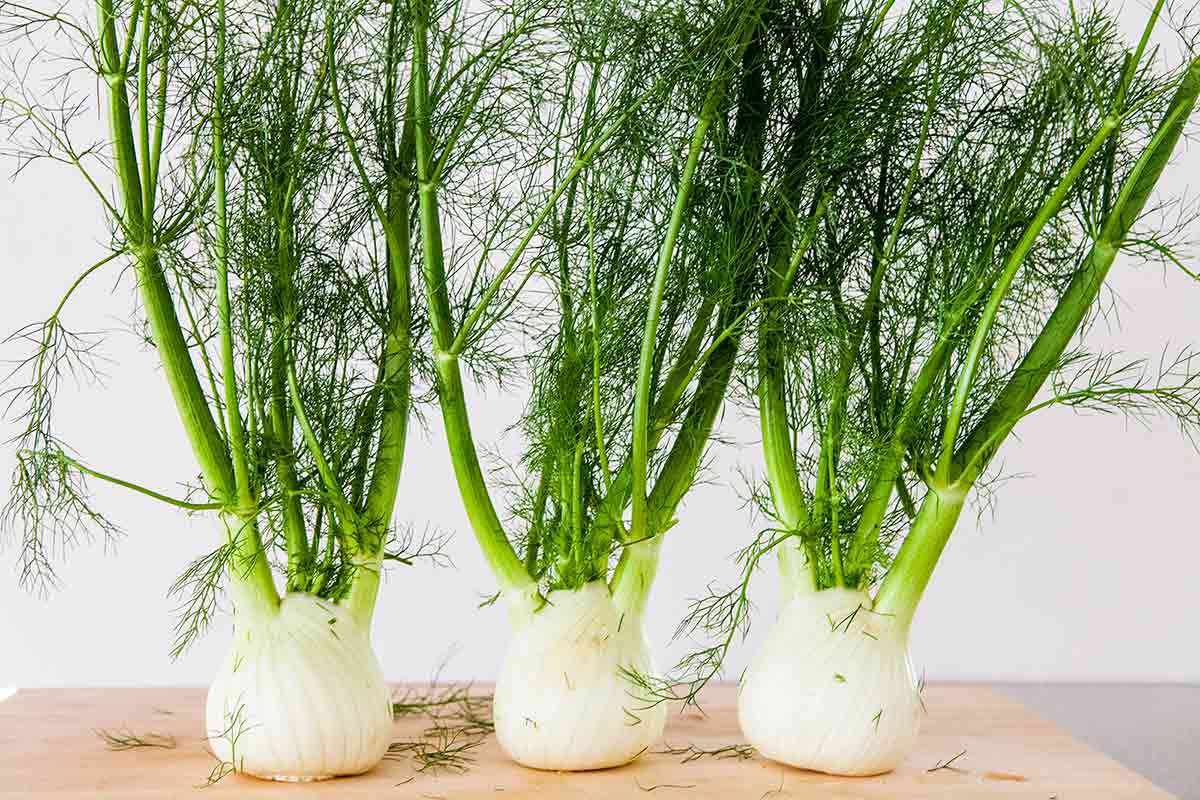
What Are Some Recipes That Include Fennel?
Fennel has become quite popular in recent years, and there are many delicious recipes out there that make use of its unique flavor. Some dishes that include fennel include roasted fennel and vegetable soup, salmon with roasted fennel, and seared scallops with lemon-fennel sauce. Fennel can also be added to salads, stir-fries, and pasta dishes for extra texture and flavor.
If you’re looking to get creative with fennel, you can also try incorporating it into desserts like cakes, tarts, and crumbles. Fennel can also be used to make syrups and jams, which are great for adding flavor to drinks or drizzling over ice cream.
What Are The Health Benefits Of Fennel?
Fennel is an incredibly nutritious vegetable with a variety of health benefits. It’s rich in fiber, vitamins, and minerals like potassium, calcium, iron, magnesium, manganese, zinc, and selenium. Fennel also contains powerful antioxidants that can help protect the body from free radical damage and reduce inflammation.
Additionally, fennel is a good source of dietary fiber, which can help reduce cholesterol levels and aid in digestion. Studies have also shown that fennel can help improve digestive health, reduce bloating, and ease symptoms of irritable bowel syndrome (IBS).
Fennel is also known for its anti-inflammatory properties and has been used to treat a variety of conditions, including asthma and bronchitis. It’s also said to have antibacterial and antifungal properties that can help boost the immune system. Overall, fennel is a nutrient-dense vegetable with many health benefits. Incorporating it into your diet can help keep you healthy and happy for years to come.
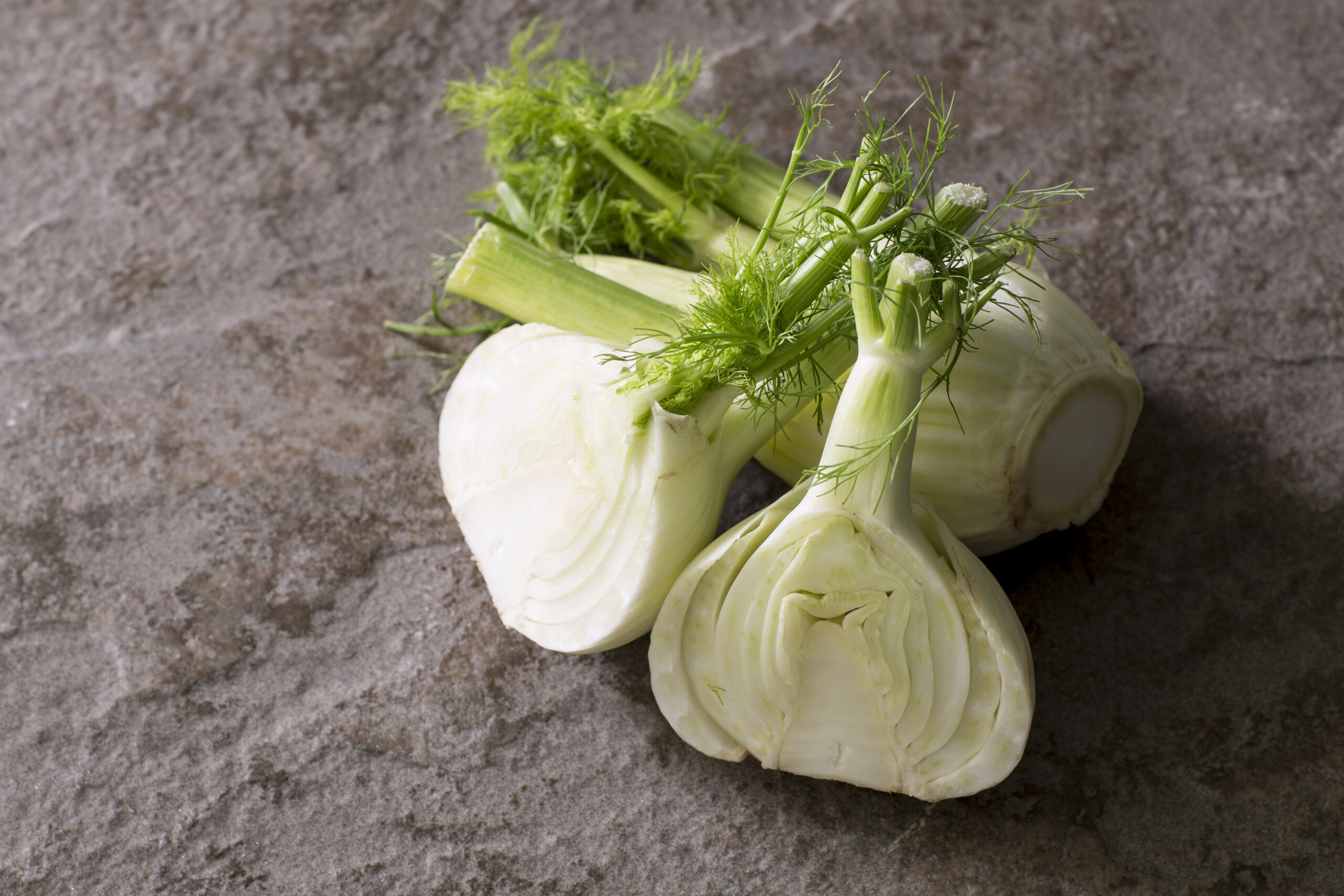
What Does Fennel Taste Like?
Fennel has a mild, sweet flavor that resembles anise or licorice. It also offers a slight hint of citrus and pepper and can be used in both savory and sweet recipes. When eaten raw, fennel is slightly crunchy with a mild sweetness that intensifies as it’s cooked or roasted. Additionally, the texture of fennel gets softer and sweeter when cooked and can be served as a vegetable side dish or added to soups, stews, salads, and sauces. So, let’s watch this video to know more about what does fennel taste like.
Why Do We Need To Know What Does Fennel Taste Like?
Knowing what does fennel taste like will help you understand how best to use this aromatic herb in your recipes. Fennel is a great addition to many dishes, bringing complexity and depth of flavor with its subtle licorice taste. Additionally, the unique texture and mild sweetness work well with both savory and sweet recipes. Whether it’s served raw or cooked, fennel’s unique flavor is sure to make any dish memorable. So if you’re looking to add a new dimension of flavor to your favorite recipes, then look no further than this aromatic herb. Try adding it to soups, stews, salads, and sauces for a subtle hint of sweetness that will bring unexpected depth and complexity. You’ll be pleasantly surprised with the delightful flavor it adds to your dishes.
The Different Varieties Of Fennel And Their Taste Profiles
In addition to common fennel, there are two other varieties you can find in most markets – Roman or finocchio and Florence fennel. While the flavor of all three types is similar, each variety offers its own unique texture and intensity of flavor.
Roman or finocchio has a mild sweetness and crunchy texture when eaten raw, and the bulbous stem gets even sweeter when cooked. This variety is most often used in salads or as a side dish but can also be added to soups, stews, and sauces.
Florence fennel, on the other hand, has a mild licorice flavor that intensifies when cooked. It also has a unique texture – tender and crunchy with a slight sweetness – that works particularly well when roasted or grilled. This type of fennel is best served as a side dish, but it can also be used in soups, stews, salads, and sauces.
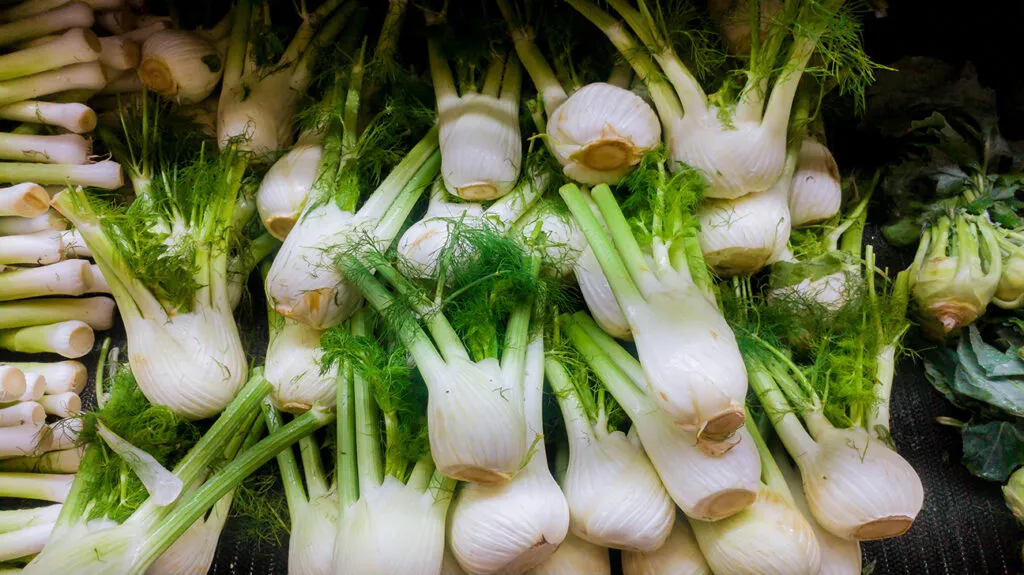
Common Misconceptions About Fennel’s Taste
Although fennel has a sweet and slightly pungent taste with subtle notes of licorice, some people mistakenly believe that it tastes like black licorice. This is because many commercial black licorices contain anethole, the same compound found in fennel. However, it’s important to note that real anise (the main ingredient in many black licorices) has a much stronger licorice flavor. So if you’re looking for something with a more mild taste, then fennel is the perfect option.
Fennel is also sometimes mistaken for celery, as their flavor profiles are similar in some ways. Both vegetables have a fresh and crunchy texture, but while celery has an earthy flavor, fennel has a subtle sweetness with hints of licorice.
Pairing Fennel With Different Foods To Enhance Its Flavor
Fennel is a versatile ingredient that can be used in many dishes, both sweet and savory. When served raw, fennel pairs well with citrus fruits like oranges, lemons, and grapefruits. The sweetness of the fruit complements the subtle licorice flavor of the fennel, creating a refreshing salad or side dish.
Fennel can also be cooked with other vegetables, like onions and garlic. The sweetness of the fennel pairs nicely with the savory flavor of these two ingredients, making a delicious combination in soups and stews. Fennel can also be roasted or grilled for added depth of flavor. Try pairing it with sweet potatoes or squash for an interesting contrast that will bring out the subtle sweetness of the fennel.
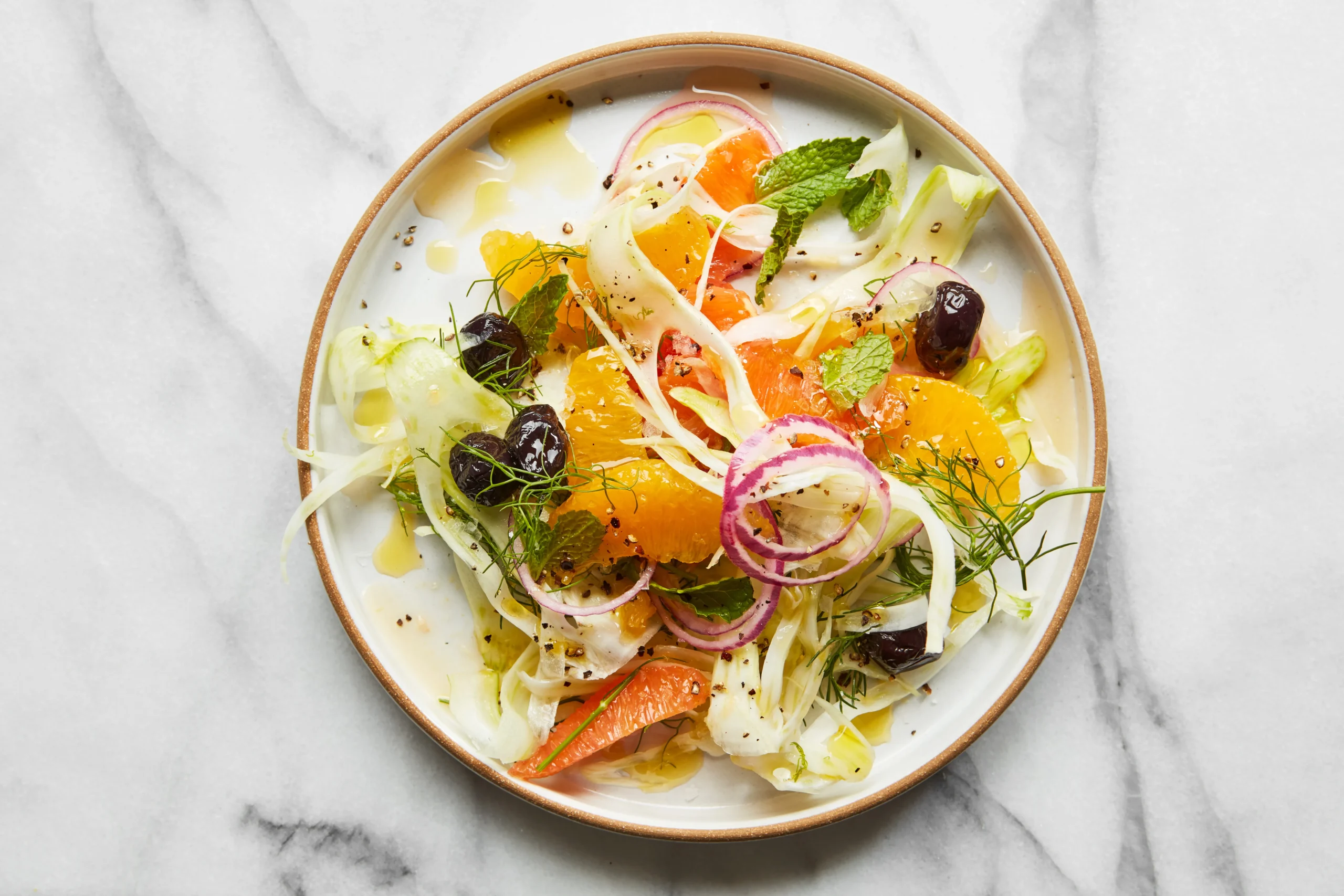
How To Cook And Serve Fennel?
Whether you’re serving it raw or cooked, fennel is a delicious and versatile ingredient that can be incorporated into many dishes. To prepare fennel for cooking, start by removing the stalks and fronds from the bulb. The stalks and fronds can be saved for garnish or added to salads. Next, slice the bulb into thin slices or wedges for roasting, grilling, or sautéing. The bulb can also be diced and served raw in salads or as a side dish.
Fennel is a great addition to soups, stews, salads, stir-fries, and sauces. It also pairs well with seafood and other proteins like chicken and pork. Fennel also works well in desserts, especially when paired with apples and oranges. Try adding it to cakes or tarts for a subtle hint of sweetness that will complement these dishes perfectly.
No matter how you choose to serve fennel, its unique flavor is sure to bring an extra layer of complexity and depth to your recipes. So if you’re looking for a new ingredient to add to your culinary repertoire, then look no further than this aromatic herb. You won’t be disappointed with the delightful flavors it brings.
Tips For Using Fennel In The Kitchen
When cooking with fennel, it’s important to remember that its flavor intensifies when cooked. So to avoid an overpowering taste, start by using a smaller amount of fennel and adding more as needed. It’s also best to add the fennel towards the end of the cooking process so that its delicate flavor isn’t lost or overwhelmed by other ingredients. Additionally, be sure to taste and adjust the seasoning of your dish accordingly if you decide to add more fennel.
When serving raw fennel in salads or as a side dish, be sure to cut it into thin slices or wedges so that its flavor isn’t too overwhelming. To bring out its unique sweetness and texture, try adding a dressing of lemon juice and olive oil or drizzling it with honey.
Finally, be sure to store your fennel properly to extend its shelf life. Wrap the bulb in a damp paper towel and place it in an airtight container before storing in the refrigerator for up to three days. Fennel can also be frozen for up to six months, making it a great ingredient to have on hand for when inspiration strikes.
With these tips and tricks, you’ll be sure to get the most out of your fennel and use it to create unforgettable dishes. So go ahead and give this aromatic herb a try – you won’t regret it.
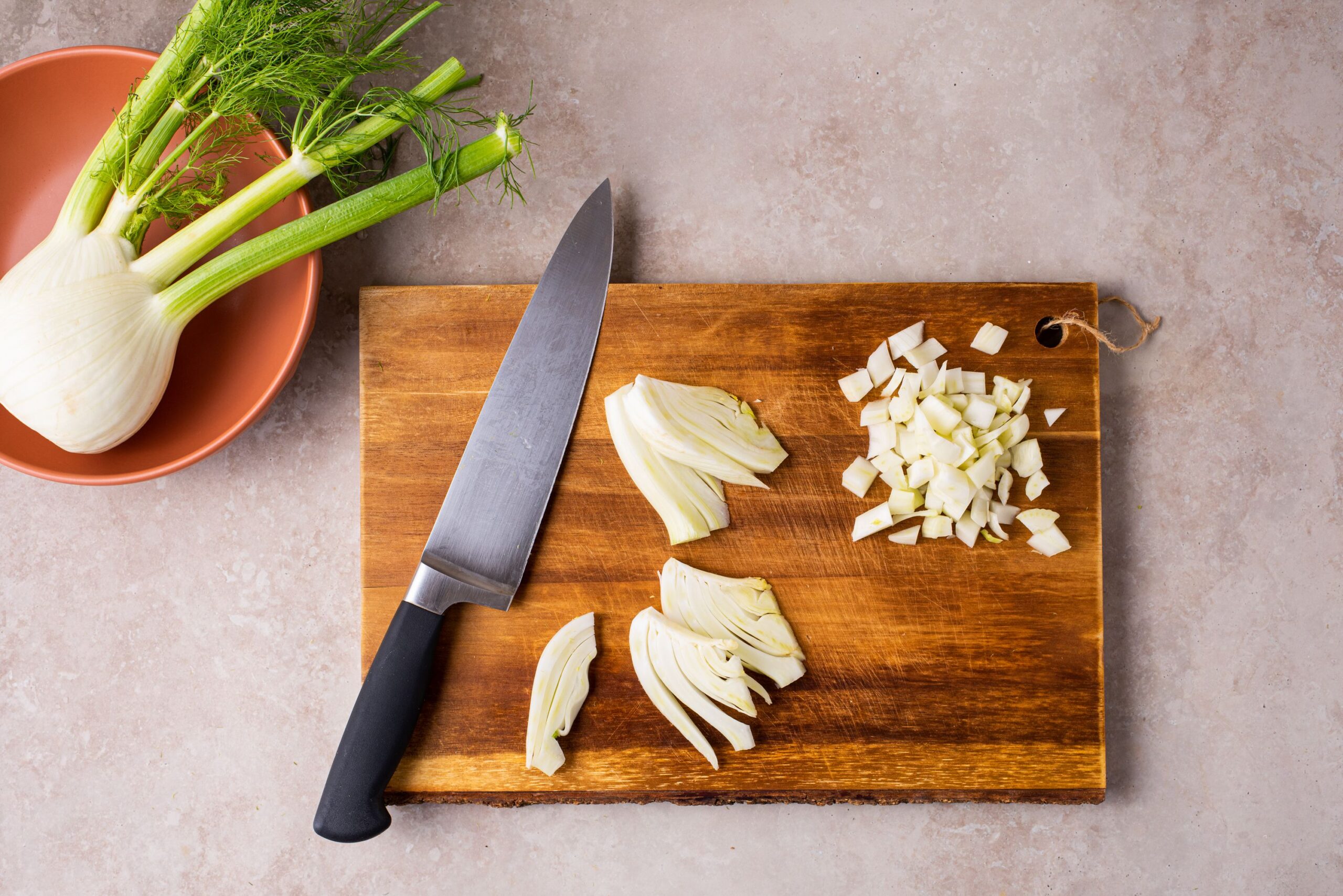
Conclusion: What Does Fennel Taste Like
Fennel is an aromatic herb with a unique flavor that can add unexpected depth and complexity to many dishes. Its distinctive taste – sweet yet slightly pungent with notes of licorice – is sure to make any meal memorable. Whether you serve it raw, cooked, or roasted, understanding what does fennel taste like and how to use it creatively will help you take your culinary skills to the next level. So the next time you’re looking for a new ingredient to spice up your recipes, don’t forget about this unique vegetable.
FAQs: Taste Of Fennel
Is fennel’s taste comparable to black licorice?
Fennel shares a resemblance to anise in terms of flavor, but it is considerably less intense than the strong taste of black licorice. As it is cooked, the taste becomes more subdued. Additionally, the fronds of fennel tend to offer a stronger flavor compared to the bulb.
What flavor is similar to fennel?
Looking for a flavorful substitute for fennel? Consider these spice options: anise, cumin, licorice root, caraway seeds, celery, parsley, onion, and artichoke. These alternatives are equally tasty and are perfect replacements for fennel.
Does fennel taste like onion?
Discover the unique and unforgettable flavor of fennel. While it may resemble onions in appearance, its taste is more reminiscent of anise or licorice. The mildness of fennel becomes even more pronounced when cooked. Take your culinary creations to new heights with the delicate and intriguing taste of fennel. Uncover the subtle nuances of this herb and elevate your next dish with its distinct flavor.
What does fennel taste good with?
Enhance your dishes with the exquisite taste of fennel. Its subtle aniseed flavor has the power to elevate a range of culinary creations. From seafood to chicken and pork, fennel is a versatile ingredient that will add some oomph to your cooking.
Is fennel flavor hot or spicy?
Unlock the diverse spectrum of fennel flavors: from the bold anise sensation that once repelled us in childhood to the gentler and pleasurable herbaceous undertone that pleases the taste buds. Embrace the unique intensity of black licorice flavor while cultivating an appreciation for pastis and absinthe, or indulge in the subtle and rejuvenating green essence found in milder fennel varieties.
Does fennel taste good?
Discover the deliciousness of fennel! This versatile vegetable, with its subtle licorice-like taste, can be enjoyed raw or transformed through cooking. Experience the magic of roasting fennel, which brings out its tender, toothsome texture and enhances its sweet and savory flavors. Elevate your dishes with this simple yet extraordinary ingredient, adding a touch of brightness to any meal.
Does fennel taste like celery?
The taste of fennel has been compared to that of anise or licorice, while others perceive it as a combination of celery and dill. It offers a slightly sweet flavor with a touch of citrus. In terms of texture, raw fennel is reminiscent of celery or cucumber.
Is fennel sweet or savory?
This versatile ingredient enhances both vegetable dishes and spices up your meals. Experience the intense and sweet flavor of fennel’s fruits, elevating the taste of both sweet and savory culinary creations worldwide.
Does fennel taste bitter?
Discover the distinct flavor of fennel – a delightful blend of sweetness with hints of anise and licorice. While raw fennel may yield a slight bitterness, cooking transforms it into a rich and savory experience. Unleash the natural sweetness of roasted fennel, for a truly sublime and earthy taste sensation.
What causes the bitter taste of fennel?
Discover the intriguing elements that contribute to fennel’s unique flavor profile. High-quality fennel boasts a generous amount of volatile oil, comprising primarily anethole (50–60%) and fenchone (19–22%). Fenchone, a colorless compound, emanates a pungent camphor-like scent and delivers the distinct bitter taste associated with fennel.
Does fennel taste like cumin?
Fennel delights the palate with its sweet taste and hints of anise seed and licorice. In contrast, cumin seeds provide a smoky, earthy note with a touch of bitterness. Despite their differences, both fennel and cumin are equally aromatic and full of flavor.
Does fennel taste like licorice when cooked?
Fennel offers a subtle anise or licorice flavor which can be intensified or made sweeter through various cooking methods. When diced and sautéed with onions at the beginning stages of preparing a soup or stew, fennel develops a delightfully sweet taste.

Chef Yong Kang has over 20 years of experience cooking in the finest restaurants, and is excited to present their vision to you and all our guests. Our caring and committed staff will ensure you have a fantastic experience with us.
We are also available for private events:, business lunches, dinners, and more. We would love to discuss how to be a part of your next event.Our restaurant refuses to compromise on quality, which is why we source our fresh ingredients from local farmers’ markets.





